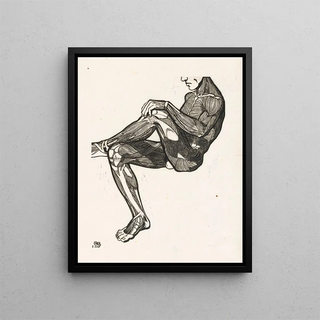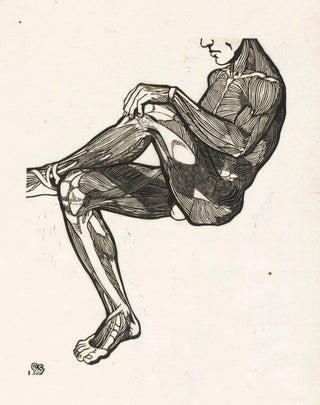Art print | Anatomical study of the muscles of the legs and arms of a man - Reijer Stolk


View from behind

Frame (optional)
In the fascinating universe of art, some works stand out for their ability to capture the very essence of humanity through the lens of science. "Anatomical Study of the Muscles of a Man's Legs and Arms" by Reijer Stolk is one of those creations that transcends mere representations to offer a true reflection on the human body. This piece, at the crossroads of art and medicine, invites us to explore the beauty and complexity of human anatomy. By delving into the meticulous details of this study, the viewer is transported to a world where aesthetics blend with scientific rigor, revealing a deeper understanding of our own existence.
Style and uniqueness of the work
Stolk's work is distinguished by its unique approach and distinctive style. Every muscle, every tendon is rendered with remarkable precision, demonstrating technical mastery that borders on perfection. The delicate lines and subtle shadows give the representation an almost lifelike dimension, as if the human body were in motion, ready to come alive under the attentive gaze of the viewer. This attention to detail is not limited to the simple reproduction of anatomical forms; it is accompanied by an artistic sensitivity that elevates the work beyond a mere scientific study. The shades of gray and skillfully balanced contrasts create an atmosphere that is both serene and dynamic, inviting prolonged contemplation. Thus, Stolk manages to marry scientific accuracy with captivating aesthetics, making this work of rare singularity.
The artist and his influence
Reijer Stolk, a Dutch artist of the 17th century, is often recognized for his commitment to merging art and science. In a time when anatomy was undergoing extensive exploration, Stolk positioned himself as an intermediary between these two disciplines. His work not only influenced his contemporaries but continues to inspire artists and scientists today. By studying human anatomy with such passion and precision, he paved the way for a new form of art that values knowledge and observation. His legacy end

Matte finish

View from behind

Frame (optional)
In the fascinating universe of art, some works stand out for their ability to capture the very essence of humanity through the lens of science. "Anatomical Study of the Muscles of a Man's Legs and Arms" by Reijer Stolk is one of those creations that transcends mere representations to offer a true reflection on the human body. This piece, at the crossroads of art and medicine, invites us to explore the beauty and complexity of human anatomy. By delving into the meticulous details of this study, the viewer is transported to a world where aesthetics blend with scientific rigor, revealing a deeper understanding of our own existence.
Style and uniqueness of the work
Stolk's work is distinguished by its unique approach and distinctive style. Every muscle, every tendon is rendered with remarkable precision, demonstrating technical mastery that borders on perfection. The delicate lines and subtle shadows give the representation an almost lifelike dimension, as if the human body were in motion, ready to come alive under the attentive gaze of the viewer. This attention to detail is not limited to the simple reproduction of anatomical forms; it is accompanied by an artistic sensitivity that elevates the work beyond a mere scientific study. The shades of gray and skillfully balanced contrasts create an atmosphere that is both serene and dynamic, inviting prolonged contemplation. Thus, Stolk manages to marry scientific accuracy with captivating aesthetics, making this work of rare singularity.
The artist and his influence
Reijer Stolk, a Dutch artist of the 17th century, is often recognized for his commitment to merging art and science. In a time when anatomy was undergoing extensive exploration, Stolk positioned himself as an intermediary between these two disciplines. His work not only influenced his contemporaries but continues to inspire artists and scientists today. By studying human anatomy with such passion and precision, he paved the way for a new form of art that values knowledge and observation. His legacy end






